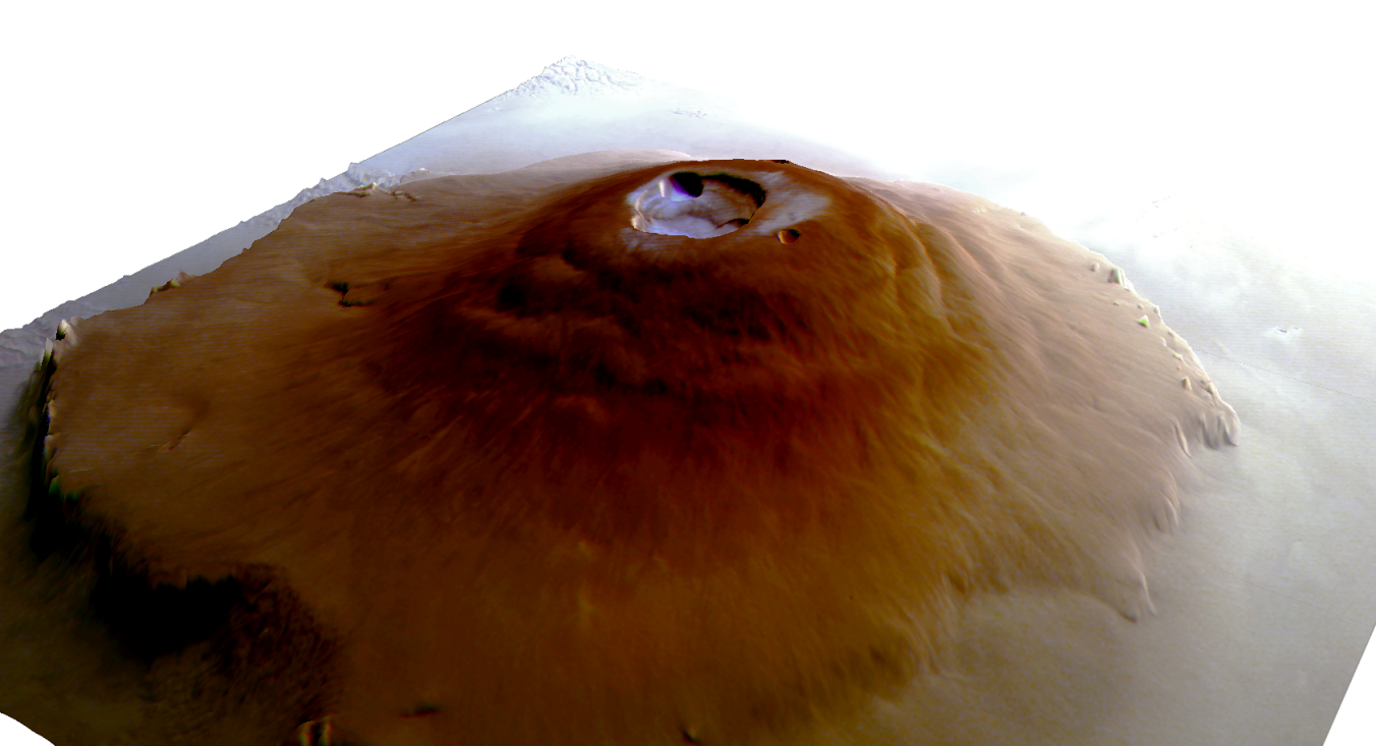Frost spotted on top of volcanoes on Mars

The water frost covers the tallest volcano on Mars
- Published
Water frost has been discovered on top of volcanoes found near Mars's equator for the very first time.
It's a big deal, as scientists previously thought it was impossible for frost to exist on this part of the Red Planet.
The icy conditions were first spotted by the European Space Agency's (ESA) ExoMars Trace Gas Orbiter (TGO). They were later confirmed by both another TGO instrument and the ESA's Mars Express.
The incredible find shows ice isn't restricted to Mars's north and south polar caps, and suggests more frost exists across the planet than first thought.
More of the latest space stories
- Published6 June
- Published29 March
- Published7 June
Where is the water frost?
This image shows the frost on the top of a volcano on Mars called Olympus Mons
The water frost can be found on top of the Tharsis volcanoes, which are the tallest volcanoes not only on Mars, but across the whole solar system.
The region is actually home to four mega volcanoes: Ascraeus Mons, Pavonis Mons, Arsia Mons and Olympus Mons.
The newly discovered patches of frost can be seen for a few hours around sunrise before they evaporate in sunlight.
Despite being as thin as a human hair, the patches cover a huge area.
The amount of frost on the Tharsis volcanoes is believed to represent about 150,000 tonnes of water, which is equal to the amount of water in around 60 Olympic size swimming pools
"We thought it was impossible for frost to form around Mars's equator, as the mix of sunshine and thin atmosphere keeps temperatures relatively high at both surface and mountaintop - unlike what we see on Earth, where you might expect to see frosty peaks," said Adomas Valantinas, who made the discovery as a PhD student and is now a postdoctoral researcher at Brown University in the US.
"It indicates that water ice had been, and still is, far more abundant across the planet than previously realised," Dr Minjae Kim, who is a research fellow at the Department of Physics, University of Warwick, explained.
"This finding confirms that ice is not solely confined to the Martian poles."
He added the ice deposits must have formed during Mars's ancient past when the climates on the planet were very different.
What do the findings show?
Mars's Tharsis region is home to four mega volcanoes: Ascraeus Mons, Pavonis Mons, Arsia Mons and Olympus Mons
The findings have raised several questions for researchers, including how long ago the frost formed on the volcanoes, and also what the climate was like on Mars at the time.
"This stunning new evidence of near-equatorial water ice on the Red Planet opens up avenues for reconstructing its evolution and environment during its earlier, wetter period," said Dr Kim.
There are a number of possible reasons why the water frost hadn't been spotted until now, including the need to know where and when to look for it.
"We happened to be looking for it near the equator for some other research, but didn't expect to see it on Mars's volcano tops," said Dr Valantinas.
More of the latest
- Published11 June
- Published11 June
- Published11 June
